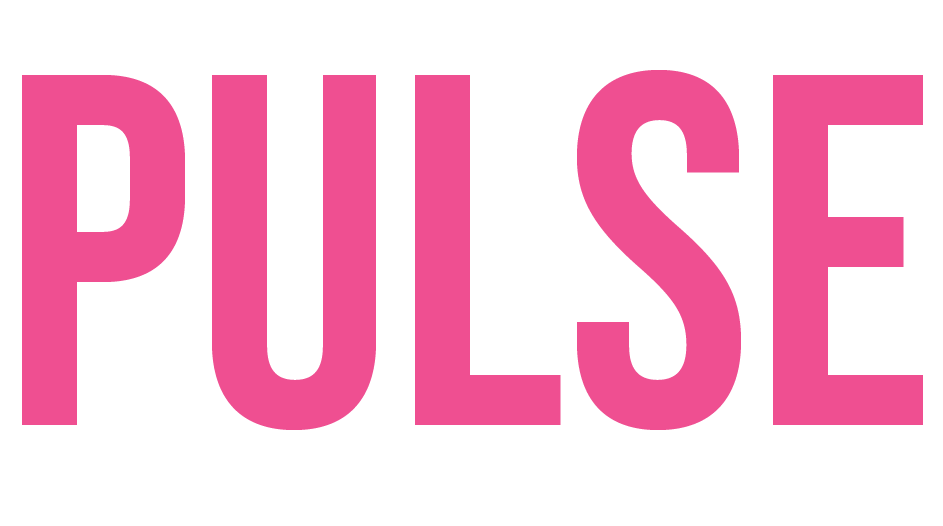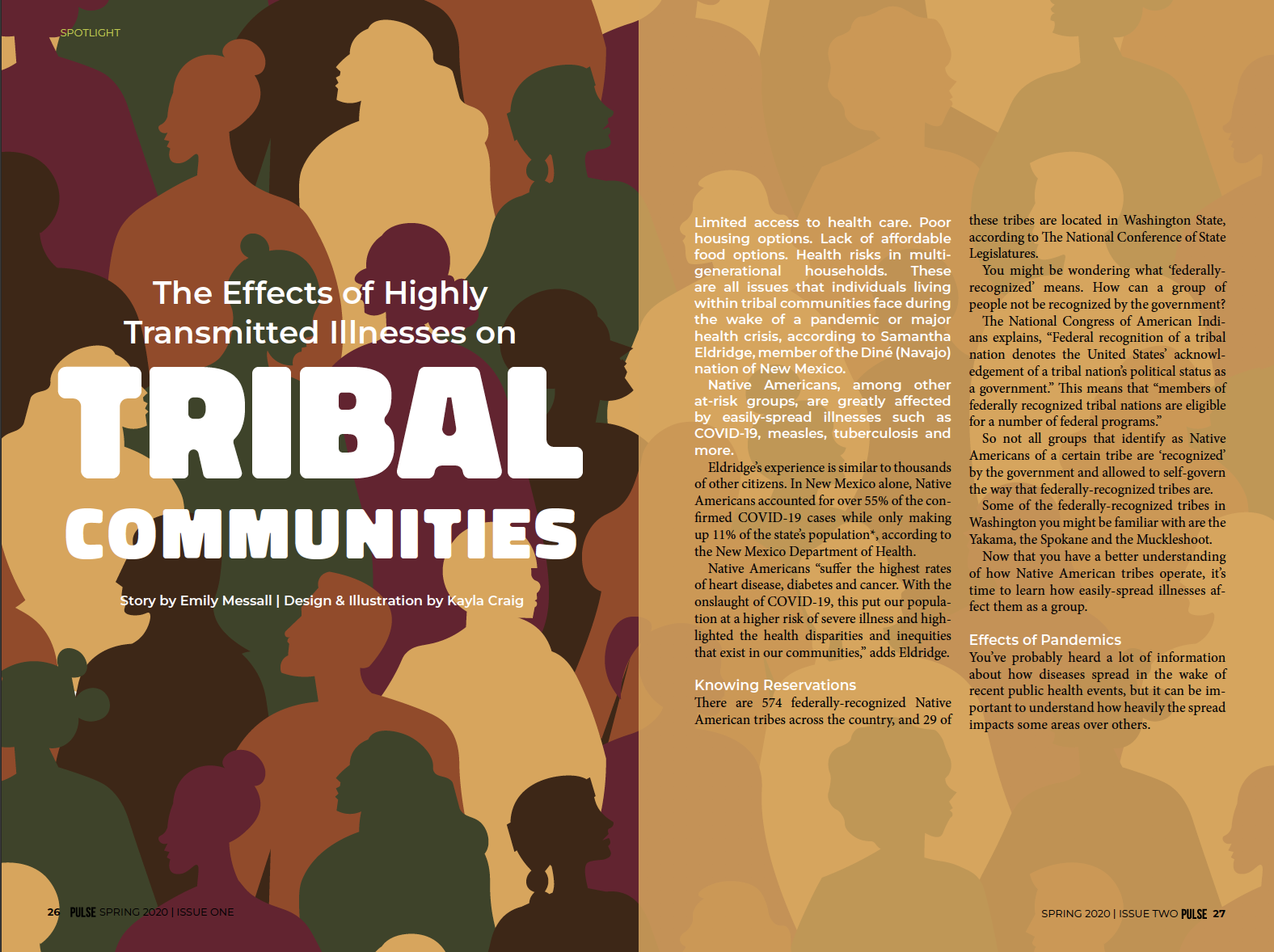The Effects of Highly Transmitted Illnesses on Tribal Communities
Story by Emily Messall | Graphics & Illustration by Kayla Craig
Limited access to health care. Poor housing options. Lack of affordable food options. Health risks in multi-generational households. These are all issues that individuals living within tribal communities face during the wake of a pandemic or major health crisis, according to Samantha Eldridge, member of the Diné (Navajo) nation of New Mexico.
Native Americans, among other at-risk groups, are greatly affected by easily-spread illnesses such as COVID-19, measles, tuberculosis and more.
Eldridge’s experience is similar to thousands of other citizens. In New Mexico alone, Native Americans accounted for over 55% of the confirmed COVID-19 cases while only making up 11% of the state’s population*, according to the New Mexico Department of Health.
Native Americans “suffer the highest rates of heart disease, diabetes and cancer. With the onslaught of COVID-19, this put our population at a higher risk of severe illness and highlighted the health disparities and inequities that exist in our communities,” adds Eldridge.
Knowing Reservations
There are 574 federally-recognized Native American tribes across the country, and 29 of these tribes are located in Washington State, according to The National Conference of State Legislatures.
You might be wondering what ‘federally-recognized’ means. How can a group of people not be recognized by the government?
The National Congress of American Indians explains, “Federal recognition of a tribal nation denotes the United States’ acknowledgement of a tribal nation’s political status as a government.” This means that “members of federally recognized tribal nations are eligible for a number of federal programs.”
So not all groups that identify as Native Americans of a certain tribe are ‘recognized’ by the government and allowed to self-govern the way that federally-recognized tribes are.
Some of the federally-recognized tribes in Washington you might be familiar with are the Yakama, the Spokane and the Muckleshoot.
Now that you have a better understanding of how Native American tribes operate, it’s time to learn how easily-spread illnesses affect them as a group.
Effects of Pandemics
You’ve probably heard a lot of information about how diseases spread in the wake of recent public health events, but it can be important to understand how heavily the spread impacts some areas over others.
According to the U.S. Census Bureau, as of 2010, the Navajo Nation is comprised of 173,667 people — Native and non-Native — living on the tribal land in New Mexico, Arizona and Utah.
Of these 173,667 people, there have been 4,434 confirmed cases of COVID-19 as of May 22, according to the Navajo Nation Department of Health.
The words ‘social distancing’ have been recently controlling many aspects of daily life, but the act of social distancing might not be as easy for Native Americans living on crowded tribal land as it is for other Americans.
“For some communities where household density is higher, social distancing inside the home can be a challenge,” says Jennifer Balkus, assistant professor in the Department of Epidemiology at the University of Washington School of Public Health.
She adds, “Native American, American Indian and Alaska Native communities are more likely to include multiple generations within a household,” which can make social distancing harder for these people.
When you hear about tuberculosis, you might think of it as a disease that has been eradicated in North America. However, this is not entirely the case.
While tuberculosis is very different from COVID-19 and the epidemiology of the two should not be thought of in the same way, Balkus says, “We see a higher incidence of tuberculosis among Native American, American Indian and Alaska Native communities compared to white communities.”
Two other types of sicknesses that are spread easily, but not exactly in the same way as COVID-19, are scabies and the chicken pox. Kesha Lea Hanlon Jasper, born member of the Tlingit/Haida tribe in Juneau, Alaska and adoptive member of the Klallam tribe in Sequim, Washington, says that, while she doesn’t remember much about sickness growing up, these two illnesses did come to mind.
Illnesses that fall under the same umbrella as tuberculosis can be harder to eliminate when it comes to Native Americans living on tribal land where it is more difficult to stop this kind of illness from spreading.
Six Feet Apart, Please
Since it’s been established that the social distancing guidelines aren’t as easy to follow on tribal land, it might be helpful to learn tips from those currently living on reservations.
Deanna Candice Chief, freshman Social Work major at Heritage University in Toppenish, Washington and Plains Cree Indigenous Indian, says her family practices staying healthy by making and wearing homemade masks, washing their hands and practicing the state’s recommended six-feet-apart social distancing rule while living on Yakama land.
For practicing as much social distancing as possible with your own household, Balkus advises, “As the weather gets nicer, consider spending more time outside as transmission is thought to be reduced outside compared to inside.”
“If possible, household members could consider having meals outside if eating together as a household normally takes place inside,” she adds.
For keeping in touch with friends and family during times of illness, Balkus says, “Reaching out to friends, family and community members through text, phone calls and video chats are great ways to social distance and stay connected to loved ones during this challenging time.”
Eldridge practices much of the same precautions while in public and adds that her family is careful to sanitize surfaces in the house. But access to proper cleaning equipment is not as easy as quickly running to Fred Meyer.
Eldridge explains that she has heard from other family members that “cleaning supplies and hand sanitizer are hard to find items on Navajo Nation [land].” Her father lives in an area where it is easier to self-isolate, but much harder to obtain necessary items.
To help their dad stay safe during this time, she explains that she and her sister have been sending him “care packages with non-perishable food items, masks, gloves, cleaning supplies and hand sanitizer to limit his contact with people so that he can stay home and stay safe.”
It might be a good idea to follow Eldridge’s example and reach out to those around you who might not have an easy time getting food or other necessities to see if you are able to help.
Having access to necessary supplies is one aspect of surviving during the outbreak of an illness, but healthcare may also play a role in why tribal communities suffer during pandemics.
Looking at Tribal Healthcare
The type of healthcare that the average family in Ellensburg has is very different than it is in other parts of the country, especially for federally-recognized tribes.
Hanlon Jasper says that she remembers having access to healthcare both on and off a reservation when she was a child.
She adds, “As long as you are an enrolled member to a tribe, you can go to most tribal clinics and be seen [for] medical, dental and mental health [issues]. They just need your address, name, Tribal Identification Number and Social Security Number.”
However, Hanlon Jasper mentions that the changes that happen in tribal health care happen at the Whitehouse level.
“Most changes in our tribal healthcare systems have been changed due to our presidents … It’s all grant-based and what monies tribes are given to help take care of these members. So some tribes are living without simple healthcare and simple basic necessities.”
Not all Native Americans experience the same access to healthcare. Chief’s situation is slightly different; she explains that she lives on Yakama tribal land with her companion, but is not registered as part of the Yakama Nation since she is an Aboriginal Canadian.
“People like myself don’t get to have the opportunity to go to the Indian health clinic [on Yakama land] because the tribal nation has their own laws about members being seen at their health clinic.”
Chief adds, “In order for a person to go see a doctor at the health clinic they have to be a full member or a descendant or come from a federally-recognized tribe in the United States.”
Healthcare is something that is handled differently across the world and even in different parts of the U.S.
When it comes to understanding why easily-spread diseases have more of an effect on people who live on reservations, Balkus notes, “Living on tribal land is not a homogenous experience. There is much variation in the size, structure and wealth of reservations throughout the U.S. Those factors provide important context for thinking through how to optimize social distancing in different communities.”
Family and community are a big part of the Native American culture, and Chief adds a note on the importance of certain members in tribal communities, stating that the Coronavirus “is hitting reservation communities hard and we need to keep the elders and children safe.”






